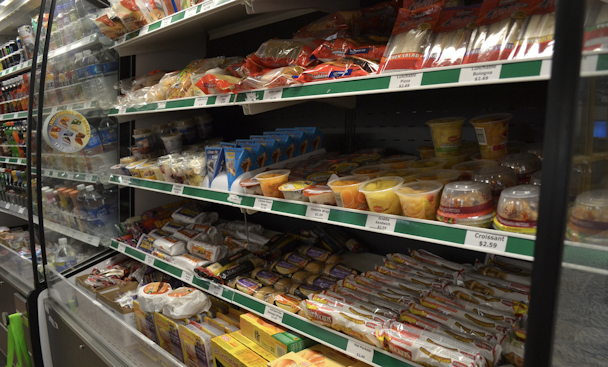The beauty of the bodega, and keeping the 'human' in 'human-centered design'
Fast Company recently posted a story about a new retail startup launch, and the headline itself was an invitation to outrage: “Two Ex-Googlers Want To Make Bodegas And Mom-And-Pop Corner Stores Obsolete.” The story went on to describe the concept: unmanned pantry boxes in apartments, dorms, and other semi-public places that offer up non-perishable items you might pick up at a convenience store.

In a decision that could most generously be called “culturally insensitive,” the company – Bodega — is named for the business it wants to “disrupt” (or “put out of business,” depending on your point-of-view), a business which has served as a means of economic self-betterment for a generation of first- and second-generation immigrants in places like New York and Los Angeles. Additionally, the logo of the company is a cat, which is of course a recognizable accoutrement of many real-world bodegas.
Predictably, Twitter pounced, and the most vocal criticisms focused on the moral and social value of disrupting something that for so many represented a shot at the American dream:
fuck off https://t.co/JLoW6hfEMr
— Jessica Roy (@JessicaKRoy) September 13, 2017
my bodega owners are yemeni immigrants and the bodega not only affords them a life in new york but also allows them to send money back home — Jessica Roy (@JessicaKRoy) September 13, 2017
Certainly in a world where we hear about socially responsible and purpose-driven brands, one has to ask: What is the purpose of Bodega? Why should we feel good about being part of disrupting immigrant-owned businesses? When we speak admirably about disrupters, usually it’s because the thing they are disrupting are large monopolistic and faceless multi-national companies (see Warby Parker and Luxottica), or industries that have ceased to offer any semblance of customer-centric service (see taxis).
I’ll let others debate the branding choices, the business model, and the social/moral validity of disrupting the livelihood of largely immigrant mom-and-pop small business owners.
I have an additional concern, and it is much broader in reach than this particular start-up.
When we talk about “designing friction out of the user journey,” it feels like “friction” is often synonymous with “people.” The implied assumption is that people are generally undesirable as part of a user experience. I think anyone who designs experiences needs to pump the breaks on this thinking, for three reasons:
Different users have different needs. Some people generally value high-speed. Others generally value high-touch. And one person’s preference for either may vary across moments of their life. Someone who uses Doordash or Grubhub to get lunch delivered at work may linger at their dry cleaners on the way home just to shoot the shit.
Brands can’t have it both ways. You can’t remove all the human touch from your brand experience and then talk about your “community.” Communities are built around people and interactions. You may decide to severely limit those interactions as part of your value proposition, but then I don’t want to hear about what a great community I’ve joined. One of the great things Lyft has done from the beginning is to include and encourage the human component within a service that could have been more streamlined. It seems to have paid off in the long run.
Life may be getting easier for some, but for many, it’s not getting richer. Researchers are just beginning to identify what some are calling an epidemic of loneliness in the US. We have our groceries delivered, we do our shopping online, we travel to and from our jobs alone in our cars. We order Starbucks on the app before we get to the store so we don’t have to stand in line. We’ve eliminated chance encounters from our lives.
Bodega probably makes a lot of sense for some people (maybe with a new name). I’m not a Luddite. But I continue to wonder how technology can encourage the right kinds of human interactions. This question feels even more important at a time when more experiences are becoming automated, and as AI and bots begin to take on roles previously reserved for people.
When you think about the way your brand or company shows up in the world, maybe you shouldn’t think about eliminating friction, but about optimizing it. Maybe “optimal friction” should become the new ideal for a great brand experience, and maybe sometimes people can even be a part of it.

